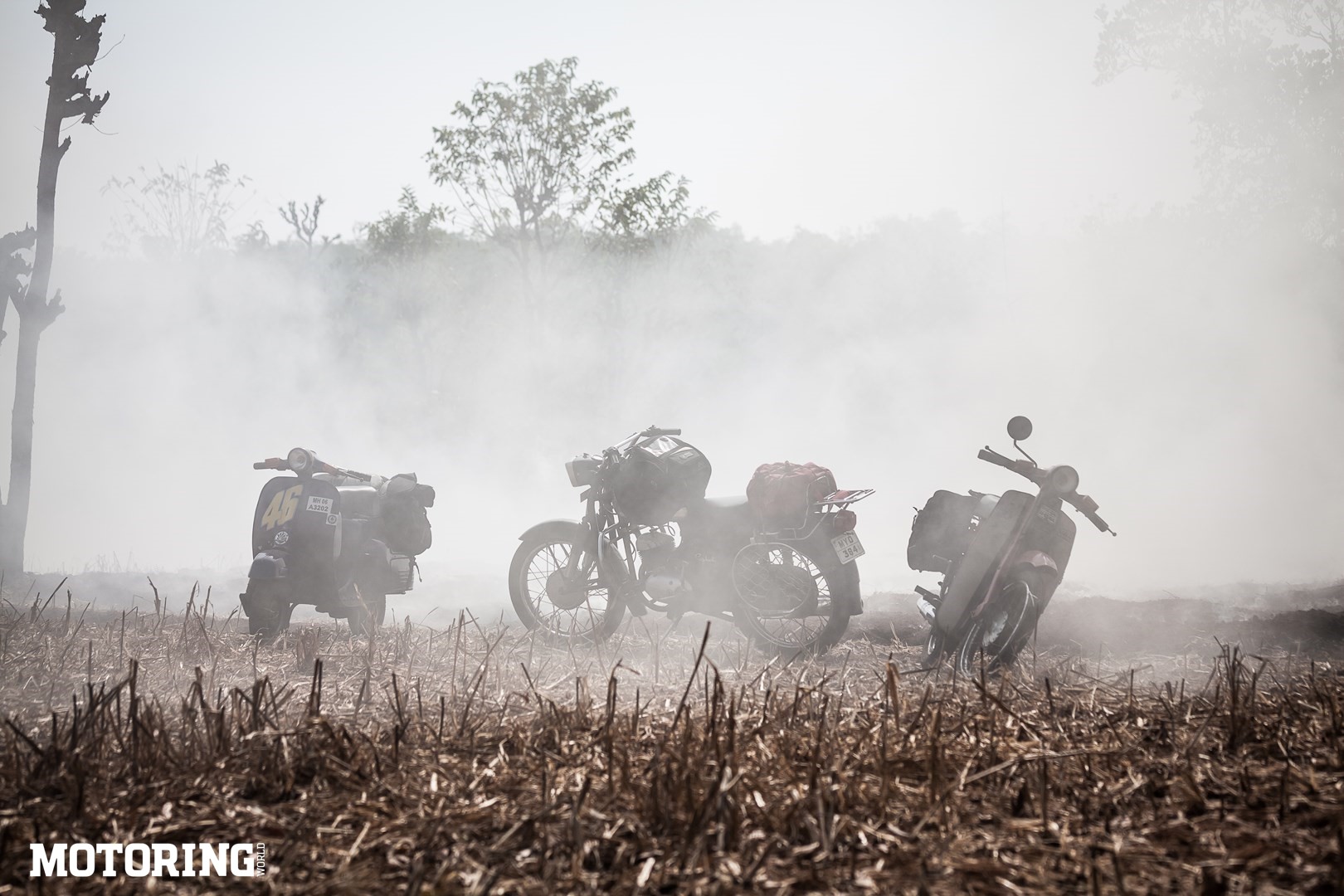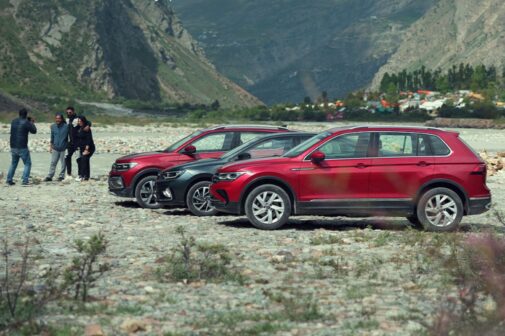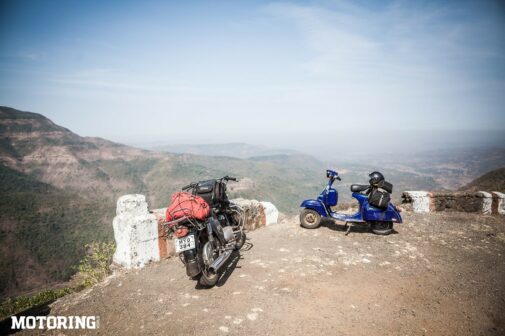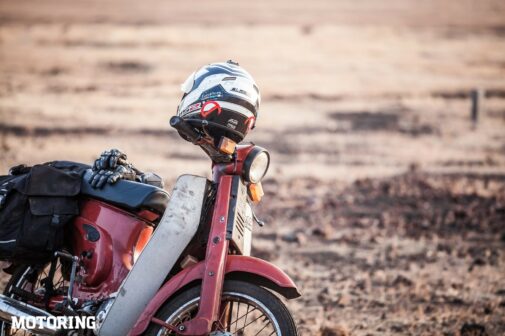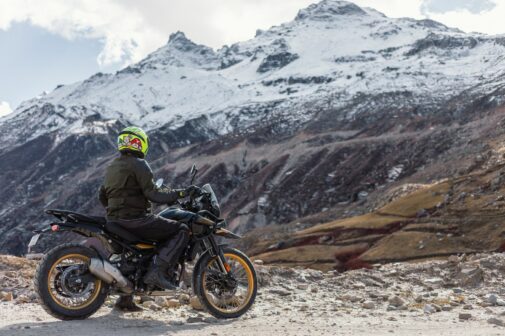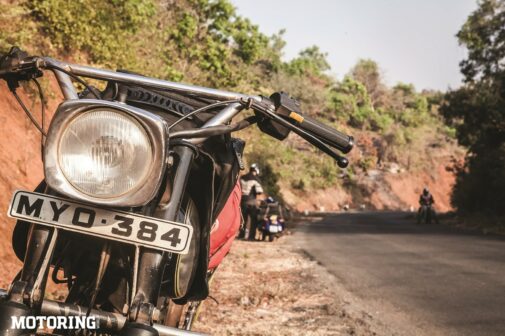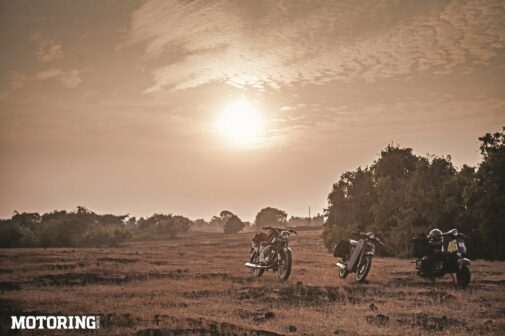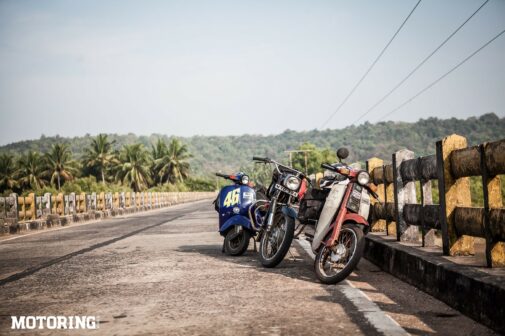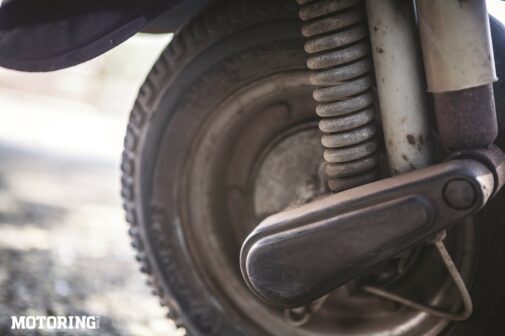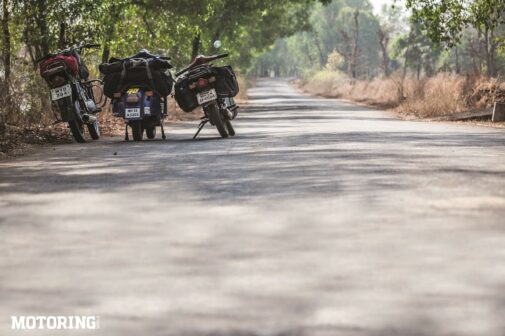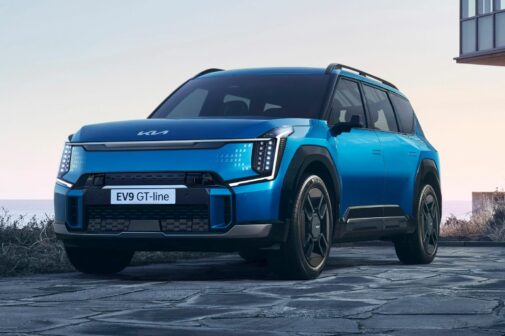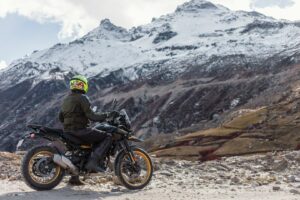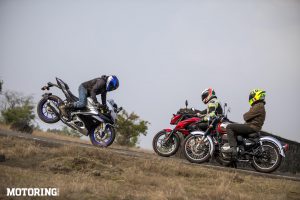Nothing rankles like unfinished business. Regret festers in the mind. Restlessness brews a mixture of blank stares and deep sighs. Until one day, you decide to do something about it. That’s the upshot; sometimes this feeling morphs itself into a certain determination. But only at certain times. Especially when you’re sitting in office with nothing to do and itching to go for a good ride. The best ideas usually aren’t the brightest. However, in the relatively inert confines of our office, anything seems possible. And this idea looked brighter than the headlamps of the machines involved. Which may not be saying much. And so it began.
All of us have machines that we’re drawn to more than most. There is no sense in trying to logically explain this attraction, mostly because logic has nothing to do with it. Ruman has a fondness for old scooters that I don’t understand. But as a teenager, his raging hormones mixed with small wheels and 2T smoke to produce a bond that I doubt will ever be broken. He bought an old Bajaj Super a few years ago and then proceeded to do more or less nothing with it for five years. Sherman’s father owned a Bajaj M50 back in the day. Sherman obviously has fond memories of it because he wanted to gift his dad an M80. When asked why not gift him his original ride, Sherman said, ‘The M80 has more power, dude.’ Um, right.
My own fascination with the Rajdoot 175 is similar. Except I’m under no illusions of power. A few years ago, one hardy example found itself parked amongst my motorcycles, and I had many chilled-out rides on it before it was taken away by its owner to be sold off to someone else. That always bothered me, though it took me years to actually go out and buy one. So, one fine day, I bullied Sherman into buying an M80 and Ruman into getting his scooter up and running, tied some luggage onto my Rajdoot and off we went to Goa. A scooter, a step-thru and a motorcycle; all old two-strokes, each one an example of our individual attractions. Oh, and we’d each only ridden them for a few hours before leaving on a 1200+ km journey. But why let mechanical uncertainty get in the way of unfinished business?
We were on our way to India Bike Week and ours was probably the strangest convoy on all the roads that led to Goa. For our trip, though, we avoided the major highway and stuck to a mix of NH 17 (well, now called NH 66. But we’ll stick to NH 17, thanks) and the Coastal Highway that snakes along the length of the Konkan region of Maharashtra. And only a couple of hours into the ride, I observed just how many of these Bajajes there still are on our roads. They’ve blended into all kinds of landscapes, invisible to everyone but those riding them. For example, if Ruman were to wave at every passing scooter similar to the one he was on, his hand would ache in less than five minutes. If Sherman were to extend a similar courtesy to other M80s, his fingers would fall right off in half that time.
The Rajdoot, on the other hand, seems to have been the victim of a mass extinction. I managed to see only one running example throughout our trip and another abandoned one, both hundreds of kilometres apart. I really have to wonder why that is so. Even while riding it, I couldn’t help but notice how the Rajdoot casts a handsomely rugged shadow on the road. It certainly was the most comfortable one of the trio, too, given the way Sherman and Ruman took to lying down the moment they got off their respective wheels. Okay, I had a problem, too; after every couple of hours, the seat’s seam seemed to cut into my thighs like a vengeful blade. But it was nothing compared to what the other two went through. Well, at least I pretended to be okay.
Now, the 110-kg Rajdoot’s 173cc motor makes around 9 bhp, good for a top speed of about 80 kph, thanks to its 3-speed gearbox. Those numbers compare well with the Super (150cc, 7.5 bhp, 103 kg) and they absolutely dominate the M80 (74.08cc, 5 bhp, 79 kg). However, the passage of time is the greatest of mechanical losses. Plus the Rajdoot’s three widely spaced out gears had to turn big 19-inch wheels which meant the most relaxed acceleration this side of a sedated sloth. Long story short, the Super was the quickest one off the blocks, thanks to its displacement and small wheels, while the M80 more or less kept up with the other two for the most part.
We didn’t progress at any great rate by our own usual standards. Usually, a trip to Goa takes about seven to eight hours on/in a normal vehicle. However, given the age of our machines, we decided to break the journey up into two parts. And even that almost turned out to be too optimistic. You see, Ruman’s way of preparing his scooter for this long ride was to stick big ‘46’ stickers on it. He’s never been the most mechanically gifted guy, yes. The scooter’s exhaust can kept coming off its mounting, no matter how many times we stopped to weld it. It did do complete justice to that Leo Vince sticker, though.
However, the scooter did look the best, in my opinion. And in those of people who saw us along the road, too. Ruman had the rear seat removed to tie saddlebags in its place and the whole thing looked strangely purposeful. I still don’t think he should’ve stuck those ‘46’ stickers, though. Or maybe I’m just jealous. Sherman’s M80, in the meanwhile, had a bit of an identity crisis; he kept stepping over it instead of through it. Denial? Or habit? I’m afraid we may never know. However, a 3.5-litre tank kept seeing Sherman run out of fuel. That was largely because all of us overestimated the reserve fuel capacity — none of us thought it’d be all of 700 ml. Mineral water bottles had to be deployed as auxiliary fuel tanks.
Our route took us onto NH 17 from where we cut across towards Guhagar, our first stop of the trip. Thanks to many repair stops and our generally timid pace, we found ourselves taking the ferry on the way to Guhagar in darkness, something I just didn’t want to do. Riding at night isn’t too much fun for me. Also, we had just one working headlamp and tail-lamp each between the three of us. So the Rajdoot lit the way as best it could, the M80’s tail marked the end of our convoy, and the scooter split its shaky faith fore and aft. It was a two-stroke limo riding through the night-time hills. Certainly a moment to remember.
To make it even more memorable, I switched off the Rajdoot’s headlamp for a couple of seconds, just to mess with the others, but ended up admiring the bright moonlight a bit too long for my own comfort. Behind me, Ruman’s half-face helmet seemed to amplify his laughter. With the Rajdoot’s headlight lighting up an area of around five square centimetres ahead of the front wheel, there were many interesting moments along the brief dark stretch. However, we did reach our stop without incident. And I have nothing to thank for that but the moonlight.
The second day was probably the best one of the entire trip. We got back onto NH 17, each of us finally getting in sync with each of our old machines, our limbs letting go of awkward exploratory movements and able to get the most out of the old, quirky controls — and that was highlighted by the fact that we were now pushing the old things as far as they’d go. Well, maybe a bit more. To shorten yet another long story, I forgot that I was riding a 47-year-old bike and we reverted to our natural riding selves, attacking corner after corner on the many superb stretches of tarmac along NH 17. In a few hours, there were no chicken strips on our ancient cracked tyres. Sportstouring on rickety old machines? Why not?
It’s funny, but it stopped mattering that the Rajdoot’s front brake felt like grabbing a fistful of cotton and was about as useful when it comes to stopping a motorcycle. Ruman, meanwhile, had no front-brake lever at all. What was the preparation he did, again? Nonetheless, believe it or not (I still can’t), we found ourselves overtaking some rather stunned riders on their modern machines. They’d catch and pass us on the straights, but in a decidedly humble manner. Maybe they knew there were more corners up ahead.
Thanks to the ‘hot’ pace, Sherman’s M80 ran out of fuel more regularly, so we had to keep stopping more often. On one such catch-up stop, Ruman got off the scooter and bellowed, ‘Best ride ever!’ The human mind is known to be an imaginative thing, especially Ruman’s, so it’s best not to take that enthusiastic declaration too seriously. But did we have fun? Oh, you bet we did. A different kind of fun, though, one that had us adapting to the machines’ shortcomings while going as fast as possible. Ruman summed it up later when we came upon a downhill right-hand hairpin covered in fish water spilled from a truck. ‘We took five different lines for the entry, apex and exit back there.’ Too true, that. As we waited for Sherman, the night began to fall fast and thick. Good thing, too, since I was starting to consider dragging my knee on the Rajdoot as a realistic possibility.
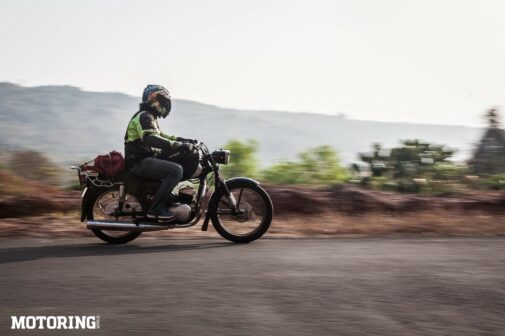
We rode into the town of Kankavli in the dark, only to find that Sherman was nowhere to be seen behind us. His phone was dead, so we couldn’t reach him, so after about half an hour of waiting by the side of the road, I did what anyone would do — panic. After I’d ridden back down the road, asking Ruman to stay put and keep an eye out for an M80 (lots of false alarms, as you can imagine), I finally held my phone to my relieved ears to hear Sherman say, ‘Dude, the M80 seized. And I’m staying in a hotel in Kankavli. I’ll take a bus to Goa tomorrow.’
My relief instantly turned into curiosity: the M80 had run like a champ for two whole days. Surely, it couldn’t have seized without no warning whatsoever? I asked him a series of questions, all of which increasingly led me to believe that the problem wasn’t as fatal as Sherman thought. In the end, it turned out to be a clogged main jet. And so, with the carburettor cleaned thoroughly, we were on our way again, Sherman having earned the nickname, ‘Julius Seizure’.
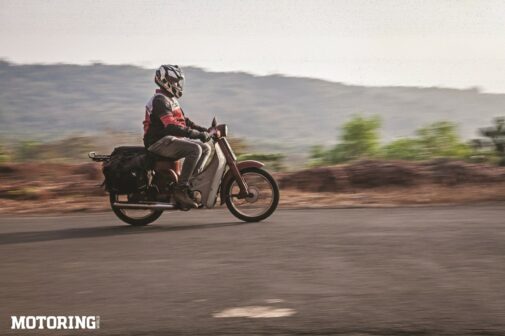
Again, those last 100-odd km to Goa were amazing. The night was cool, traffic had thinned out to almost nothing and the old two-stroke motors were singing in unison along perfect black tarmac lined with bright cat’s eyes. This time, Sherman took over the lead and rode the wheels off that M80, perhaps to seize the thing for real this time. No such luck, though. I rode into Goa with a big smile on my face. And even though it was almost 3 am by the time we reached our hotel, we did what should be done after reaching a destination on unlikely transportation — go look for bottles to empty.
For the next three days, we did whatever we do in Goa, so it’s all a bit of a blur. However, we also fulfilled one of our wishes — to ride these things around Goa, as chilled out as polar bears. Being IBW-time, the place was full of two-wheeled idiots of all kinds, but it didn’t matter. And we did get enough attention to make up for it, too; people walked over to ask us about the bikes, shook their heads in wonder and walked away, much in the same way someone does upon realising that the person they’re speaking with might not quite be right in the head. We weren’t the fastest or the coolest at IBW, but were definitely the funniest sight. I’ll take whatever superlatives I can get.
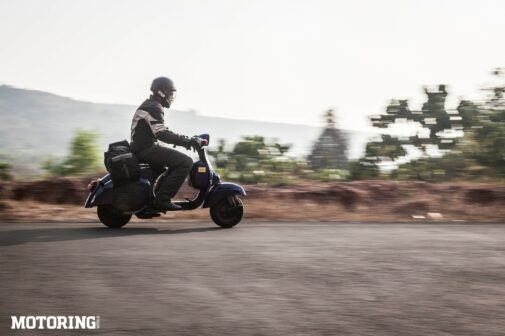
We serviced the three machines in Goa, despite Ruman’s concerns that the rust holding his scooter together might get disturbed and cause more problems. He might have had a point there, so we decided to take three days for the ride back home. That’s roughly 200 km per day; perfectly manageable, we all thought. What happened next is what happens to most perfectly laid plans. And we only had an extremely basic one. The first day saw us ride only 100 km to Tarkarli, since we had shots to take there and, well, we started late. But it turned out to be a great idea since after a relaxed ride to Tarkarli, we spent that night lounging around on a deserted jetty, our spirits high under the bright moonlight next to the dark water. For me, trips are made of moments like these, moments that make memories. The problem is, sometimes memories can be painful, too.
Over the past few days, the Rajdoot had watched the Bajajes go through their mechanical struggles with a detached calm. It hadn’t put a foot wrong yet. However, on our way out of Tarkarli, though, it came to a choking halt for no apparent reason. A few kicks and a few litres of sweat later, it was up and running like nothing had happened. Probably just a minor clog in the main jet. Not a seizure, certainly. But I thought it was a bit strange the bike should do that.
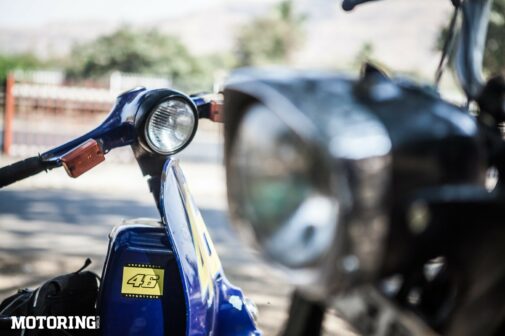
Later that day, as we were making good progress (relatively speaking, of course), the M80 died without warning. No amount of kicking or fidgeting could make it start; it was probably the ignition coil that had packed up. Since we were on a stretch where there was nothing around, we decided to tow the M80 to the next town, some 30 km away. And before I knew it, Ruman had tied the back of his scooter to the front of the step-through and we were on our way. I hung back to direct traffic around them, and I kept noticing that every time Ruman accelerated, the M80 went into a slight wobble. I should’ve said something, then, but didn’t want them to worry about it. Well, I should’ve anyway.
In the last kilometre of that 30-km ride, I watched them go up a right-hand hairpin with a feeling that said, ‘This isn’t going to end well.’ A downshift at the wrong moment, the two of them out of line and physics took over to produce a crash for the step-through, throwing Sherman to the side of the road. Bloody hell.
It wasn’t a fast crash at all; I mean, how fast can a scooter with saddlebags pulling a step-through and mounted with a rider and saddlebags go? However, it was bad enough. Sherman had hurt his hands and couldn’t ride anymore even if we managed to fix the broken left-side of the M80’s handlebar. A somewhat broken rider and a somewhat broken bike, neither able to continue. Sherman had put in his papers the day we began this ride. This was his last ride at Motoring. And here we were, seeing him off in a random Konkan town, certainly the strangest send-off ever in the history of Motoring.
By the time we loaded Sherman and his M80 onto a bus to Mumbai and I accepted that this was now a two-rider trip, the fat lady had stopped singing and gone home. It just didn’t feel the same anymore. Maybe the incident weighed on Ruman, too. I can’t think of another reason why his scooter’s floorboards were sagging towards the end of our trip. It’ll all make sense eventually, though. Things fall out of place, usually to fall into place elsewhere. Not for us to know how and why it’s like that, I suppose. The point is that we all had fun.
Just earlier that day, the three of us had struggled up an incline to reach an arrow-straight road lined with fields on both sides. And we all shifted up three gears at exactly the same time; I don’t know if the others caught that, but it’s yet another moment I remember. It was a two-stroke song that the three of us wrote as we rode along. It was a reminder that these machines have character and sound, and are in no way bland. They might be outdated, yes, but they’re far from being useless. And certainly capable of generating a story or two for the grandchildren, if you have such ideas.
Almost in every town or village that we stopped in, people on their modern 100cc motorcycles looked at the Rajdoot with a haze of fond nostalgia descending upon their eyes. And — I am not kidding about this — every single one of them said their uncle had one a long time ago. This is also strange, because the first Rajdoot that came to my home all those years ago was bought by its owner as a tribute to her uncle who used to ride one himself. So, not everyone, but their uncles certainly had one.
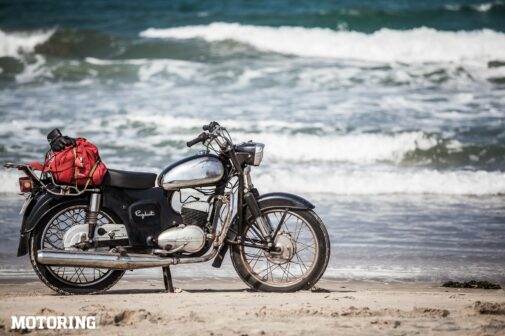
But where have they all gone? Clearly, people still like the Rajdoot, not least because it’ll happily run on anything you pour into the tank, including kerosene, though it’s not the smartest of things to do. Is it new-is-better marketing at work here? Status? Efficiency? I think my nearly half-a-century-old motorcycle running 400 km on a single tank is better for the environment than the family of five on a new four-stroke bike throwing plastic bottles and wrappers on the road in the middle of nowhere. New bikes take more resources to manufacture. Old bikes need very little to keep running. The concept of recycling has been around for a while now. I think it’s high time we had remotorcycling, too. Makes sense in a country with a two-wheeler population like ours, right? Just look at all those M80s on our highways; some I saw were just about holding on to life, some were in pretty good nick. And each one of them reminded me of Sherman. And you know what? I blame the tools he carried.
I didn’t carry a toolkit along for the Rajdoot despite several WhatsApp warnings from well-wishing ex-Motoring writers. But I think tools weigh heavily on a motorcycle’s disposition. It’s a sign of doubt. The amount of trouble Sherman and Ruman had seemed to be directly proportional to the number of tools they were carrying. No tools, no worries. Of course, if you’re stuck somewhere without that crucial screwdriver, I hope you don’t remember this. Just remember that motorcycles of a certain age are affected by only two things — heat and vibration — and ride accordingly.
We rode over mountains and beaches, through fields and back roads. We rode as we normally do, and whatever troubles we ran into were mostly due to not enough preparation and testing. What I’m saying is, if you have an old motorcycle, it’ll still take you wherever you want to go. It’s a special feeling, standing in the middle of nowhere, looking at your old bike and thinking, ‘What the hell am I even doing here on this thing?’ They are like the creaky hinges in your first home. They might belong to the past, but when the time is right, you always remember each and every sensation, and nothing comes close to that. Oh, and none of us ever brought up the topic of swapping our machines for even a bit. Must be that attraction thing.
We were surprised to find that time flies on these machines (notice I didn’t say anything about covering distances). We learnt yet again that the world is a beautiful place, even more so from the seat of a motorcycle. Or a scooter or even a step-through. It was epic in the most relaxing of ways. I also realised that I’ve only ever bought two bikes; somehow, both are old two-strokes. I’m still trying to figure out what that means. It’s probably the first (hopefully not the only) time examples of these old two-strokes have gone for a ride together. Even if they have, it’s the first (hopefully not the only) time Sherman, Ruman and I have gone for a ride together.
What has become of the three machines? As of now, the M80 still stands at Sherman’s place with its broken handlebar. How do I know? I messaged Sherman to confirm how many gears the M80 has and his reply was, ‘Still zero.’ The scooter and the Rajdoot stand separated by a few bikes in my parking lot. Upon our return, Ruman decided not to ride it back home and took a car instead. I just hope it’s not one of his five-year plans again. So, the M80 is still wounded, the Rajdoot is running as fine as ever and the scooter still hasn’t reached home. That’s how it goes: a story that began with some unfinished business. And ended with it, too.
[This story was originally published in our May 2016 issue]





